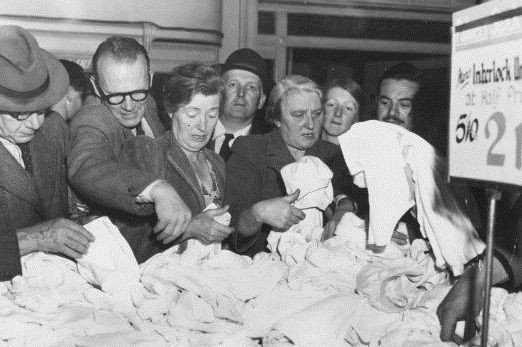Fed Rate Decision: What Policymakers Are Looking At When Deciding Whether To Adjust Monetary Policy

Former Federal Reserve Chairman Alan Greenspan famously subscribed to an unconventional economic measure: men’s underwear sales. As the theory goes, increased spending on boxers and briefs indicated an economy nearing full steam. Since men’s underwear is the garment least likely to be seen in a household, it’s among the last items to see the benefits of rising wages.
Greenspan may have been more eccentric than current Fed Chair Janet Yellen, who strives to communicate transparency and consistency in the indicators the Fed watches in order to gauge economic strength and time monetary policy moves. At the top of the list: unemployment rates and inflation measures, each tied to the Fed’s dual mandate of maximizing employment while controlling prices.
But that doesn’t mean there aren’t indicators important to the Fed that get short shrift in broader conversations. Here are some of the measures that Yellen and her fellow Fed officials follow in addition to the headline data.
Employment: Quits and Openings
Unquestionably, the most pertinent indicator for the Fed is the unemployment rate, which currently stands at 4.9 percent. Nearly as important as this headline rate is the measure of unemployment that also includes part-time workers who want to work full-time and would-be job seekers who have given up. That rate is now 9.7 percent.
But there are other measures of the job market that the Fed takes into consideration. Among Yellen’s favorites is the measure of job openings available each month. Compiled by the Bureau of Labor Statistics, upticks in this metric indicate increased demand for hiring and growing economic momentum.
Job openings have soared over the past two years before plateauing in recent months at levels well above what the economy saw in the boom years before the recession. Those data give the Fed optimism that the economy is chugging along.
Another employment indicator that goes beyond the standard unemployment rate is the quits rate. As the economy heats up, more workers feel safe enough to ditch their jobs and search for new work. Yellen has called the official quits measure “a barometer of worker confidence in labor market opportunities.”
The number of job quitters as a proportion of the working population has risen steadily since the depths of the recession, most recently approaching levels last seen consistently in late 2007. To the Fed, that’s good news on the labor front.
Inflation: Setting Expectations
The other side of the coin is inflation. The Fed raises interest rates when it deems that inflation is — or could be — reaching a tipping point. By all indications, U.S. inflation hasn’t yet reached that mark, which the Fed currently pins at 2 percent.
Core inflation, which excludes volatile food and energy prices, reached 1.7 percent in January after averaging 1.3 percent for the previous 12 months.
But as Fed officials are keen to point out, actual inflation isn’t just a matter of businesses raising the price of goods to account for growing wages and other costs — though that’s the root cause of inflation. Just as important are the market’s expectations of inflation in the months and years to come.
“Theory suggests that inflation expectations, which presumably are linked to the central bank's inflation goal, should play an important role in actual price setting,” Yellen said last September.
Those expectations, as measured by the University of Michigan, have not helped the Fed in its goal of reaching consistent 2-percent inflation. Consumers and producers have steadily lowered their projections for price gain since 2011, with 12-month inflation expectations reaching 2.5 percent in December.
The reasons are complex, involving Fed policy, domestic economic vigor and foreign impacts, particularly from the price of energy. As energy prices stabilize and global financial markets relax, the Fed hopes inflation — and the expectations surrounding it — will follow the labor market upwards, whether or not that’s in the Fed’s power to change.
© Copyright IBTimes 2024. All rights reserved.





















